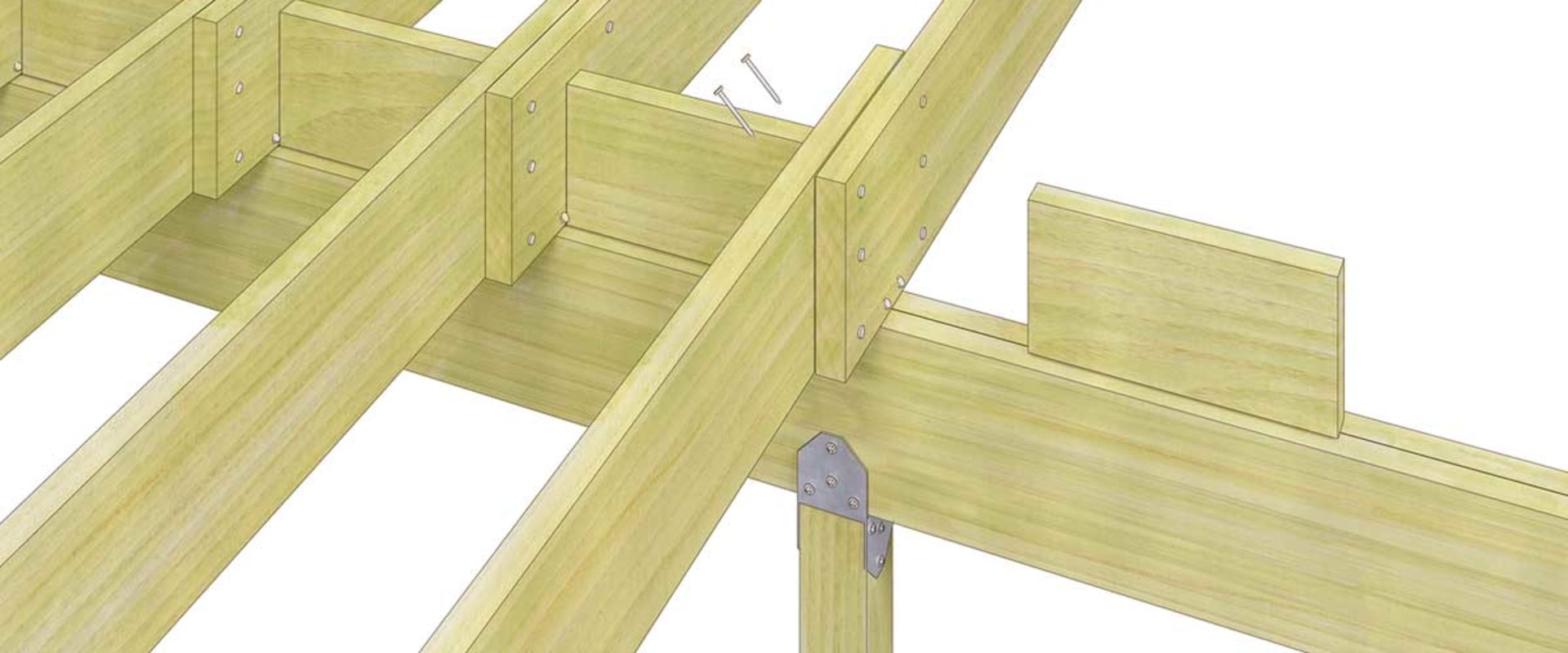When constructing a deck, the space left between joists is crucial for structural integrity and longevity. Typically, joists should be spaced 12 to 16 inches apart, center-to-center, depending on the type of decking material used. This spacing ensures adequate support and prevents sagging over time. However, in areas prone to environmental stress, like those requiring Raleigh water damage restoration, it's essential to consider additional factors. In such regions, proper spacing becomes even more critical due to the potential for water-related damage. Builders in areas with frequent water damage restoration needs may opt for closer joist spacing to counteract the effects of moisture and ensure a more durable and stable deck structure. Consulting with local building codes and a professional is always advised to accommodate specific environmental conditions.
Adding a deck to a house or patio is a great way to create an outdoor living space. Whether you design and build the platform or hire a professional, the spacing and sizing of the platform joists are important decisions from a structural point of view. The larger the wingspan and spacing, the more spongy a platform will feel. A structurally sound and secure platform is the end product of all the components of the building, even if the only thing you can see and admire are the roof boards.
Tables and furniture rest on a roof frame of joists supported by beams, ledgers, posts and footings; all are important. The size of the platform determines the number and location of the beams and support posts, which in turn affects the size and spacing of the joists. The roof joists are boards placed on the edge following a spaced pattern to which the platform boards are attached. Its dimensions, wingspan and spacing determine how solid and compact the platform feels from a structural point of view.
Joists distribute the weight of live and dead loads from the platform to the supports. The dimensions of the spacing, span, slope and joist are identified in the International Residential Building Code (IRC), which guides most national and state codes. Whether the platform structure is standalone or is attached to a structure with an accounting board, the joists travel the distance and help to shape the platform. The spacing between the joists on the platform is the distance between them, measured from center to center, and is usually 12, 16, or 24 inches. The span is the distance that a beam travels from a main book to a beam, or from one beam to another, without support.
The narrower the space between joists, the longer the span. Section tables and calculators usually provide values for dimensions, spans and spacing of joists based on a dead load of 10 pounds per square foot (PSF or PSF) and an actual load of 40 PSF. The height from ground level, wind load, snow load, load capacity of ground and possible seismic forces also influence section. It is advisable to hire services of a structural engineer to perform correct calculations, especially for large roofs, loads and heights. The spacing between platform beams affects support of platform boards; if they are too far apart, platform will be elastic or soft and may sink. Spacing also affects weight distribution, influencing structural strength and integrity of platform.
In addition, inconsistent spacing will create an irregular pattern of fasteners that will detract from visual appearance of platform. The distance between joists is important for structural loads such as snow loads and even hot tubs. The Building Code stipulates acceptable spacing to avoid injury or death due to improper spacing that can cause structural failure. It's better to comply with Code or involve a structural engineer. There are six main factors to consider when designing and building a platform that determine span and spacing of platform beam.
Each factor affects wingspan, spacing or both as well as placement of beams and support posts that form platform structure. The shape and size of platform influence design and number of joists, possible spans and even spacing. A square or rectangular platform may be straightforward but rounded or circular section or platform is not. The shape often determines direction of joist grid which in turn affects layout and direction of roof board. The shape determines placement, spacing and dimensions of post and beam.
It also determines if joists will be cantilevered which also affects span and spacing. A yellow pine measuring 2×6 at 12 o C can cover 9'-11 but that comes down to 6'-8 with cantilever. Roofs close to ground may have larger wingspan than roofs raised higher above level. Raised platforms often require greater support for posts and beams for shorter joist spans. Different types of wood even within species have different physical characteristics and strengths. Growing conditions also contribute to variations making wood from one area more desirable for different projects.
Slow-growing trees have more growth rings which means they are denser and stronger than trees that grow faster. The higher number of rings per inch results in more compact final grain and better resistance to bending. Lower-quality economic or general-purpose wood has too many knots or large knots that weaken wood too much for structural use. It is least expensive material and can be used in structures that do not support loads or for concrete forms. The thickness and width of a joist determine maximum distance it can cover. Most decks use 2-inch dimensional wood which is more readily available.
Duplicating a joist will increase its width allowing it to extend by approximately 25% while doubling thickness will add 75 to 100% more to section. A single 2 × 6 spruce can...The space between platform beams should never exceed 16 inches in center (with exception of MAX platform boards which allow maximum 24 inches in center). For stiffer feel 12 inches or less may be preferred. How far apart should terrace beams be? In North America space between joists for residential roofs is 12 to 16 inches apart or depending on local building code. Most platforms require 16-inch space for platform itself 12-inch space used for special applications such as ladders or commercial structures.







